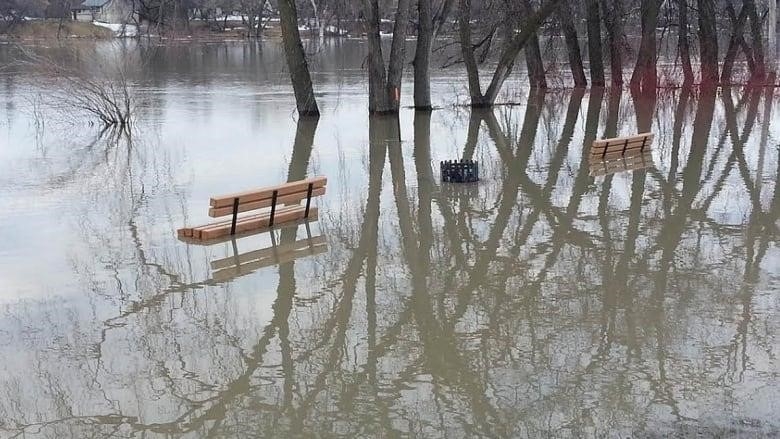
At 11:45 a.m. Wednesday, provincial officials will hold a news conference to talk about the flood outlook
After a series of big snowstorms in the United States, there is now a big chance that the Red River will flood this spring. This is what Manitobans have been told.
The province’s Hydrologic Forecast Centre said in a report that came out Wednesday that most of the U.S. part of the Red River basin has more snow than usual because of these storms.
The risk of flooding will depend a lot on the weather from now until the spring melt.
The forecast says that if the weather is good, there is a moderate risk of flooding like what happened in the fall of 2019.
If the weather was normal, there would be a big chance of major flooding, with peaks like those in spring 2019.
If the weather was bad, there would also be a big chance of major flooding, with peaks like the highest river levels in 2020.
But the height of community dikes and other flood protection works is higher than even the worst-case predicted peak level.
Wednesday at 11:45 a.m., provincial officials will talk to the press about the flood forecast.
The U.S. weather service will update its flood forecast for Fargo and Grand Forks on Thursday.
The forecast is a big change from the first flood outlook for the season, which came out at the end of February and called for moderate flows along the Red and Assiniboine rivers and along the Fisher and Icelandic rivers in the Interlake region.
In the most recent forecast, the risk of flooding along the Assiniboine, Souris, Roseau, Rat, and Pembina rivers is still low to moderate.
People who live near these rivers can expect the water levels to stay below the flood protection levels.
Most other basins in Manitoba, like the Saskatchewan River, the Whiteshell lakes area, and northern Manitoba, also have a low chance of flooding.
Floodway to operat
This spring, the Red River Floodway will start to work to lower the water level in Winnipeg.
Operation of the Portage Diversion is also expected to keep the Assiniboine River east of Portage la Prairie from getting clogged with ice and to control river levels in places like Winnipeg that are further downstream.
The province said that, except for Dauphin Lake and Lake St. Martin, most of Manitoba’s lakes, such as Lake Winnipeg and Lake Manitoba, should stay within their normal operating ranges after the spring runoff.
Work to cut ice along the Red and Icelandic rivers to prevent flooding from ice jams began in mid-February and is now done.
